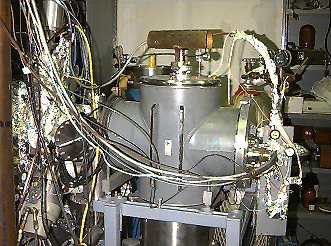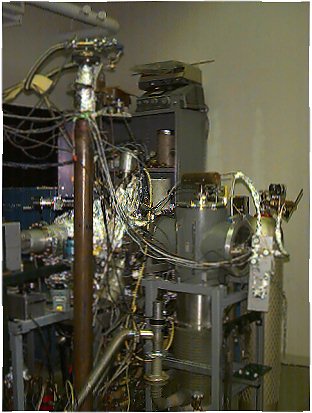
All this equipment you see in this picture is just the shell and support equipment for the helium atom reflectivity machine. Tinfoil, power cables, water plumbing, pneumatic lines, gas feeds, and high voltage lines all conspire to conceal the useful core of the machine. Hidden inside is a small single crystal of platinum or copper (only a centimeter in diameter and weighing a gram or two) where we adsorb molecules under ultra-high vacuum conditions. By shining a beam of helium atoms on the surface, we can observe very small populations of adsorbates as measured by the intensity of the specular reflection of the helium beam. Like a mirror reflecting light, a polished crystal surface will reflect helium atoms when clean and will scatter the atoms when covered by adsorbates. This technique is highly sensitive to only molecules on the crystal surface and is non-damaging, relatively easy to perform, and very versatile.
Generally, we monitor adsorption and desorption during dosing to determine sticking coefficients and desorption energies. We examined with the following systems:
- Alkanes and Alkenes on Au(111)
- Alkanethiols on Au(111)
- Simple physisorption
- Self-assembled Monolayer Formation
- CH4 on Pt(111)
- Effect of Internal Energy on Chemisorption
